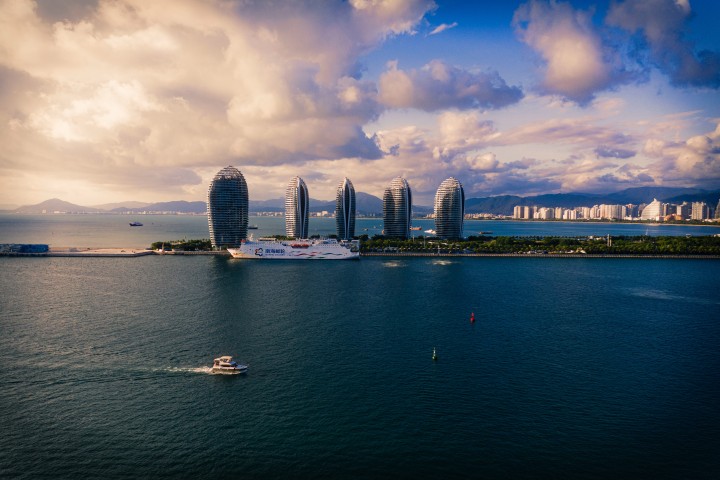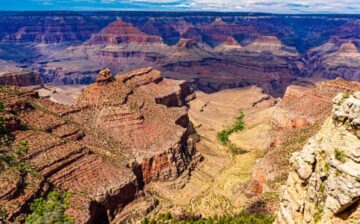
Are you planning or thinking about a move to Phoenix, AZ? If so, you may be wondering what it’s like to live in the Arizona capital.
People from around the country and the world are heading to Phoenix and other cities in Arizona. Phoenix saw a steady population increase in each of the years 2020-2022. Most are moving from the Los Angeles area, but many are also coming from Asian countries, along with Central America, Mexico, and Canada.
People come to Phoenix in search of new business opportunities and for the good weather. The city is home to large businesses in biosciences, technology, and engineering. Also, small businesses are finding the capital and resources they need, along with a well-trained population. Phoenix is sometimes called the “Silicon Desert” for its concentration of tech companies reminiscent of California’s Silicon Valley.
Maybe you’re one of the people planning a move to Phoenix in search of new employment, or you already have a job lined up. Or perhaps you just want a change of scenery and nicer weather.
Moving to a new area can be intimidating if you don’t know what the area is like. This post will give you the pros and cons of living in Phoenix to help you be prepared when you arrive.
Pros and Cons of Living in Phoenix
As we mentioned, Phoenix is one of the hottest moving destinations in the U.S. But the desert climate isn’t what attracts most people to the area. Here are some benefits of living in Phoenix, AZ:
The Natural Beauty
The Southwestern U.S. is a unique region of the country and offers spectacular scenery. Located in the Valley of the Sun, Phoenix is surrounded by canyons, arches, landscapes that feature fascinating rock formations, and desert plateaus painted in brilliant shades of red, orange, and lavender.
Plentiful Recreation
Phoenix has plenty of outdoor recreation activities, including hiking, biking, rock climbing, swimming, kayaking, and tubing along the Lower Salt River. Phoenix is famous for high-end spa resorts and Jack Nicklaus-designed golf courses. And there are 189 parks, 200 miles of hiking trails, a zoo, and historic towns with Native American art and shops. South Mountain Park and Preserve is the largest city park in the country.
The all-year-round nice weather (300 sunny days per year) affords plenty of time to enjoy the great outdoors. The Camelback Mountain trail provides a 2.5-mile hike to the top of Camelback Mountain for a magnificent view of the city.
When the summer heat becomes too much to bear, you can stay inside and explore the city’s museums and art galleries or make a reservation at a theater or concert hall.
Low Cost of Living
Phoenix’s cost of living is five percent below the national average. Although it’s the sixth-largest city in the U.S., it’s much more affordable than other cities like San Francisco, Los Angeles, and Chicago. While the influx of people is starting to push home prices up, the median home price is still less than the national average. Food and utility prices are also much lower than in many other big cities.
Strong Economy
Phoenix has one of the best economies and job markets in the country. Five Fortune 500 companies are based in the city, and other major companies are starting to move there. Phoenix has a fast-growing economy and many well-paying jobs. The average salary is $71,000, which is 20 percent higher than the national average. Phoenix is projected to have a job growth of 48.2 percent over the next 10 years, which is higher than the U.S. average of 33.5 percent.
Good Public Transportation
Within the city, Phoenix has a strong public transportation system with 29 bus routes and one light rail line. It is possible to live in downtown Phoenix without a car.
It’s a Fast-Growing City
Phoenix is one of the fastest-growing cities in the country. There’s a certain excitement to living in a metroplex with a population that has grown 15 percent since 2010. There are new businesses, new malls, restaurants, and stores opening everywhere. Also, if you plan to stay for a while, buying a home in the city may be a good long-term investment.
Mild Winters
Many people come to Arizona in the winter to escape the snow and bitter cold in the North and East. A study found the city’s population increases by 300,000 in the winter. The coldest months are December and January when the high temperature is 68 degrees and the low drops to 45. There’s sunshine almost every day—in fact, Phoenix is the sunniest city in America. There’s also very little precipitation, just eight inches of rain annually.
We’ve listed some of the benefits of living in Phoenix. But there are also some downsides:
Hot Summers
The summers in Phoenix can be brutally hot. In fact, Phoenix has the highest summer temperatures in the country: June, July, and August have daily averages of over 100 degrees. Even at midnight, the temperature will still be in the 90s. The low humidity does mitigate some effects of the heat, but you constantly have to watch out for heatstroke and sunburn.
Flash Floods
Although Phoenix only gets a few inches of rain per year, the rain often comes in huge bursts, lasting from five minutes to a few hours. The ground doesn’t absorb water, so the rainwater spills over onto roadways and parking lots. This means flooding can pose danger to cars and people. Because the water spreads out rapidly, floods can happen even far away from where the rain falls.
Dust Storms
Living in the desert means dust storms. These happen routinely, about one to three times per year, causing visibility to drop to zero for a short while. They carry dirt and air pollution and can cause or aggravate respiratory problems.
Traffic
Public transportation is lacking outside of the central and downtown areas, so people rely on their cars to get around. This means a lot of congestion. The traffic in Phoenix is worse than in 20 other metro areas in the nation.
Dim Job Prospects Outside of Key Industries
Phoenix has a fast-growing economy, but most job growth is in certain industries, like aircraft manufacturing, air conditioning, and electronics. If you work in another field, jobs might be harder to come by.
Crime and Drugs
Overall, Phoenix’s crime rate is well above the national average. Some locations are safer than others, but the rate of both violent crime and property crime are significantly higher than in some other cities. Also, because of its proximity to Mexico, Phoenix is a hotbed for drug trafficking. Drug use and drug-related crimes occur with relative frequency. In some locations, your chance of being involved in a drug-related crime is one in 44.
When you move to Phoenix, AZ, you will enjoy lots of benefits and experience some downsides. Many people move to the area for the great scenery and climate. If you’re planning a move to Phoenix, the moving experts at All Around Moving can help make your move easy and stress-free.
We hope you found this post, Tips on Moving to Phoenix AZ: Relocation Guide, useful. Be sure to check out our post Reasons to Move to Phoenix [Infographic] for more great information. Additionally, we put together this newsletter to share with your friends and family.
Have Experience in the Moving Industry? Want an Additional Income Stream? Work With All Around Moving!
Partner with us and join the Work With Us program, and we’ll help you make money by establishing your own moving relocation consultant business. Read the terms by Clicking here to learn more.





